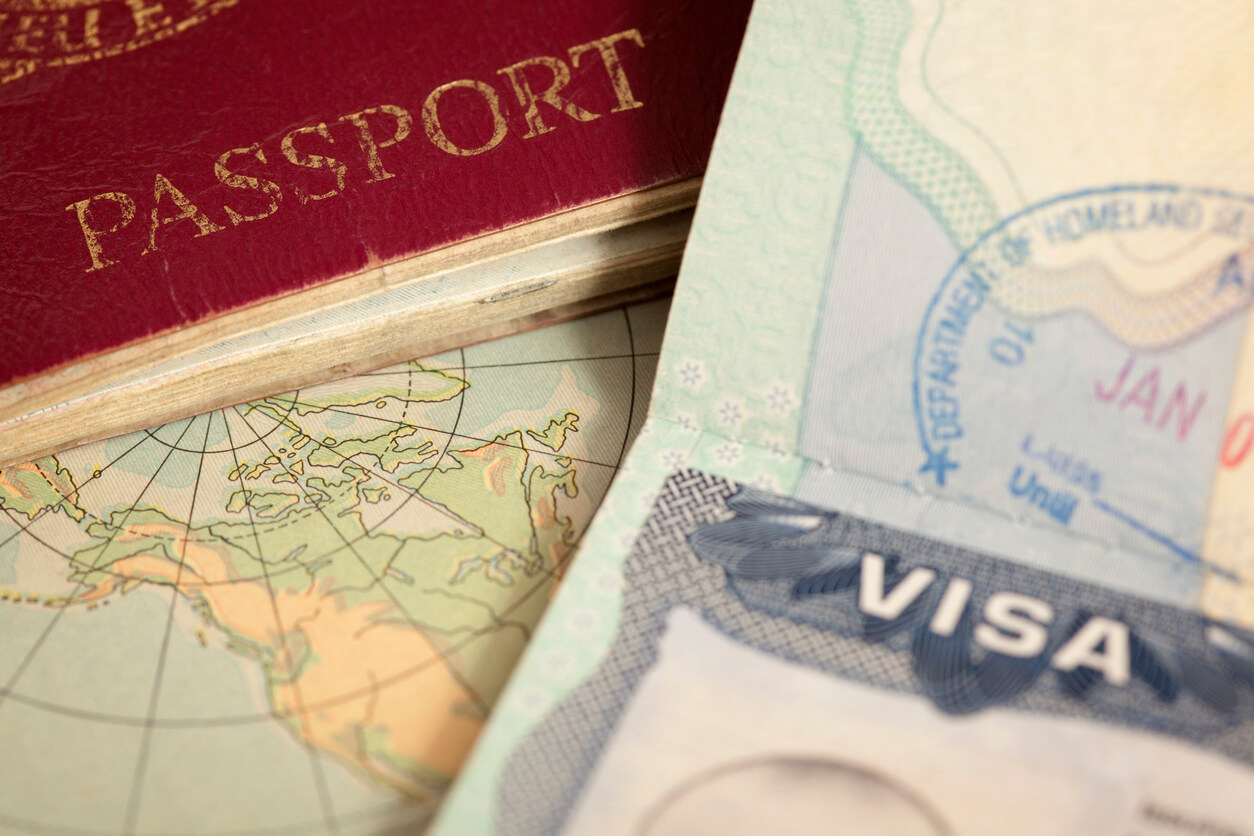 Top 10 Technologies Driving Digital Transformation
Top 10 Technologies Driving Digital Transformation
Navigating the H-1B Visa Process: A Step-by-Step Guide
Embarking on the journey to secure an H-1B visa, a critical pathway for skilled professionals aiming to work in the United States, often seems like navigating a complex labyrinth filled with legal jargon, stringent requirements, and tight timelines. This step-by-step guide is meticulously crafted to demystify the process, offering clear, concise instructions and invaluable insights to guide applicants through each phase.
From understanding eligibility criteria and preparing your application to navigating the lottery system and responding to potential requests for evidence (RFEs), this guide aims to arm you with the knowledge and confidence needed to embark on this challenging yet rewarding journey toward achieving your professional aspirations in the U.S.
Here’s a step-by-step guide to help you through the process:
1. Determine Eligibility
The H-1B visa is a non-immigrant visa that allows U.S. companies to employ foreign workers in specialty occupations that necessitate theoretical or practical expertise in specialized fields. This visa category is crucial for industries that demand specialized knowledge, often found in sectors like information technology, finance, engineering, mathematics, and medicine. To qualify for an H-1B visa, both the job and the foreign worker must meet specific criteria set by the United States Citizenship and Immigration Services (USCIS).
Job Requirements
For a job to qualify under the H-1B visa category, it must meet the following criteria:
- Specialty Occupation: The position should require the theoretical and practical application of a body of highly specialized knowledge. In other words, it should be a job that is complex or unique enough that it is only performed by someone with at least a bachelor’s degree or higher in a specific field of study.
- Degree Requirement: The job must have a minimum entry requirement of a bachelor’s degree or its equivalent. The degree requirement is a key indicator that the job is complex or specialized enough to be considered a specialty occupation.
- Employer-Employee Relationship: The employer must demonstrate an employer-employee relationship with the visa beneficiary, having the right to control the work of the beneficiary on a day-to-day basis.
Worker Qualifications
For the foreign worker to qualify for an H-1B visa, they must meet the educational and, in some cases, licensure requirements:
- Bachelor’s Degree or Higher: The worker must hold at least a bachelor’s degree or its equivalent in the specific specialty that is directly related to the job offer. The degree must be from an accredited university or college.
- Equivalency through Work Experience: In some cases, if the worker does not have a bachelor’s degree, USCIS allows work experience to be considered equivalent to a degree. Generally, employers consider three years of relevant work experience equivalent to one year of higher education
- State Licensure: If the job is in a profession that requires a license or other official permission to practice in the state of employment (such as practicing medicine), the worker must hold such licensure.
2. Labor Condition Application (LCA)
The Labor Condition Application (LCA) is a critical step for employers in the United States intending to hire foreign workers under the H-1B visa program. This process involves the U.S. Department of Labor (DOL) and serves multiple important functions aimed at protecting both the H-1B visa holders and U.S. workers in similar positions. Here’s an expanded view of the requirements and implications of the LCA:
Purpose of the LCA
The LCA is designed to ensure that foreign workers on H-1B visas are offered terms of employment that are consistent with U.S. standards. The primary objectives are:
- Fair Wages: The LCA confirms that H-1B employees are paid at least the prevailing wage or the actual wage paid by the employer to other employees with similar qualifications and positions, whichever is higher. Authorities determine the prevailing wage based on the job’s geographic location, ensuring that foreign workers receive a salary commensurate with local standards.
- Working Conditions: It ensures that the employment of H-1B workers do not negatively impact the working conditions of similarly employed U.S. workers. This includes aspects such as hours, benefits, and working environment.
Filing Process
The employer must file the LCA electronically using Form, ETA 9035E through the DOL’s iCERT Portal. The process involves the following steps:
- Wage Determination: Before filing the LCA, the employer must determine the prevailing wage for the position in the intended area of employment. The Foreign Labor Certification Data Center or a private wage survey accomplishes this.
- Employer Attestations: The employer must make several attestations when filing the LCA, including commitments regarding wages, working conditions, and the impact on U.S. workers. They also attest that there is no strike, lockout, or work stoppage in the named occupation at the place of employment.
- Public Access File: Upon filing the LCA, the employer must maintain a public access file that includes evidence of compliance with LCA requirements. This file should be available for public inspection and include documentation such as the wage rate, calculation of the prevailing wage, and information about the location of employment.
Approval and Validity
Once submitted, the DOL reviews the LCA for completeness and accuracy. If approved, the LCA is certified and returned to the employer, who then must submit it as part of the H-1B petition to the U.S. Citizenship and Immigration Services (USCIS). The LCA is typically valid for up to three years and must be in effect before the H-1B worker begins employment.
Compliance and Enforcement
The DOL has the authority to investigate complaints against employers who are suspected of not complying with the terms of the LCA. Violations lead to penalties, including fines, barring the employer from hiring H-1B workers for a period, and, in severe cases, criminal sanctions.
3. File Petition with USCIS
Once the LCA is approved, the employer files a Petition for a Nonimmigrant Worker (Form I-129) with U.S. Citizenship and Immigration Services (USCIS). The petition must include evidence of the worker’s qualifications and the LCA approval. There is a cap on the number of H-1B visas issued each year, so timing and preparation are crucial.
H-1B Cap and Timing
There is an annual cap on the number of H-1B visas that are issued: 65,000 visas under the regular cap and an additional 20,000 visas for individuals who have earned a master’s degree or higher from a U.S. institution. The cap necessitates a competitive selection process, commonly referred to as the H-1B lottery.
Obviously, the timing of the application is crucial. The filing period for H-1B visas begins on April 1st each year for the fiscal year starting October 1st. Given the cap and the high demand for H-1B visas, it’s essential for employers and prospective employees to prepare their documentation well in advance and file as early as possible within the filing window.
4. Visa Application and Interview
After the United States Citizenship and Immigration Services (USCIS) approves the I-129 petition, indicating that the petitioning employer in the U.S. has met the requirements to hire a foreign worker under the H-1B visa category, the next steps for the applicant involve several key processes, primarily focused on obtaining the H-1B visa from a U.S. Embassy or Consulate in their home country. Here’s an expanded view of these steps:
Completing the Online Nonimmigrant Visa Application (Form DS-160)
The Form DS-160 is the standard online application form for all nonimmigrant visas, including the H-1B. It collects personal, educational, as well as work history information from the applicant.
- You must complete this form accurately and in full; providing false information leads to visa denial.
- After submission, the applicant should print out the confirmation page as it is needed for the visa interview.
Paying the Visa Application Fee
- You must pay a non-refundable visa application fee before scheduling the interview. However, the fee amount varies depending on the type of visa and the country of application.
- Some applicants might also need to pay a visa issuance fee, depending on the applicant’s nationality, which is based on reciprocity between the applicant’s country and the United States.
Scheduling and Preparing for the Visa Interview
Applicants must schedule an interview at the U.S. Embassy or Consulate in their country. Wait times for interview appointments vary by location, season, and visa category, so applicants should apply early.
Prior to the interview, applicants must gather required documentation, including:
- Passport valid for travel to the United States.
- The Form DS-160 confirmation page.
- Receipts proving payment of the application fee.
- A photo meeting the U.S. visa requirements.
- The I-129 petition approval notice (Form I-797).
- Any additional documents that prove the applicant’s eligibility for the H-1B visa, such as educational certificates, work experience letters, and the job offer from the U.S. employer.
5. Enter the United States
If granted, the worker then enters the United States with the visa. The H-1B visa initially allows you to stay for up to three years, but it could be extended to a maximum of six years. Additionally, it’s important to maintain valid H-1B status by adhering to the terms of employment.
Tips for Navigating the Process
- Start Early: The H-1B visa process is lengthy, so start the process as early as possible.
- Stay Informed: Regulations and policies change. Undoubtedly, keep yourself updated with the latest information from official sources.
- Documentation: Ensure all documents are accurate and complete to avoid delays or rejections.
- Consult an Expert: Consider consulting with an immigration attorney or a professional who specializes in H-1B visas to help navigate the process.
Furthermore, navigating the H-1B visa process presents a challenging journey, filled with meticulous paperwork and strict deadlines. However, armed with the right information and a clear step-by-step guide, applicants approach this process with confidence and clarity. Moreover, remember, the journey to securing an H-1B visa is a testament to your dedication and commitment to pursuing your professional aspirations in the United States.
As you conclude this guide, take a moment to reflect on the steps ahead, stay organized, and seek professional guidance when needed. With patience and perseverance, your efforts pave the way for exciting new opportunities and experiences in your career.
Interested in pursuing a career in the USA? Choose Lorhan as your trusted guide! We offer H-1B visa sponsorship for ambitious individuals eager to work in the US. Our visa assistance streamlines the process, setting the stage for your professional adventure in the US. We also welcome Visa transfers, so contact us today. Reach out to us now to start your visa application journey together! Visit our website for more information: https://bit.ly/3uHCiRt
NOTE: This is not a legal document and should be interpreted as one. This is a compilation of the information publicly available to guide the Visa process.
About Lorhan Corp
Lorhan Corporation Inc is a premier tech solution and managed services provider for businesses worldwide. Established in 2009, Lorhan Corporation connects top technology minds in the fields of UI/UX, Full Stack Java Web & Mobile Development, SAP Solutions, QA Automation & DevOps Tools.







